For me, 2022 was the year of comm audits. We did a ton. We did them for big community colleges, and smaller ones, and noncredit divisions, and departments, and even a couple of universities. You would think our findings would be all over the place, but you’d be wrong.
Despite this variety of clients, the issues are surprisingly similar across the board. So, today, I’m going to share four of the most common college communication problems I see and how to fix them.
Just so we’re on the same page, the purpose of a communications audit is simple—to identify the relative strengths and weaknesses of a given set of communications. This can mean looking at departmental communications (like enrollment arc and financial aid emails), reviewing digital ads or social media pages, evaluating program materials, or analyzing all of it. If you’re short on time or people power, focusing on one aspect of your comms is a great way to start.
Here at GradComm, our team takes the client collateral we receive, analyzes them based on our proprietary grading scale, calls out what is working, and provides recommendations on areas in need of improvement. Suppose you were doing this on your own. In that case, you’d want to create a rubric that accounts for visual and rhetorical quality and any other characteristics you want to get a handle on (think branding, diversity, etc.).
Many of our clients suspect there are issues when they hire us but may not have the time or resources to really dig into all of the materials to understand how deep the issues run. Truth be told, having an outside, objective opinion is also helpful if you’re navigating departments and personalities that are reluctant to acknowledge the issues.
If you do take this journey, what you find is likely to surprise you and help you see why comm audits are a critical tool for improving conversion rates, helping students succeed, and maintaining your brand identity and your institution’s reputation.
Problem 1: Overly Transactional Emails
Solution: Adopt a More Student-Friendly Tone
One of my biggest pet peeves is the overly academic nature of enrollment emails (the emails students get after they apply) that focus only on the transactional needs of various departments with little or no language that attempts to engage, relate to, or understand the student experience. While it is important to inform students about deadlines and steps that threaten to derail their education, the truth is, these are still prospects and need to be nurtured as such. Instead of requiring students to meet you where you are, meet them where they are with emails that mix encouragement and supportive messaging with easy-to-understand next steps.
Problem 2: Speling and Gramar Errors
Solution: Prioritize Polished Communications
I know this would never happen to you, but… It does. ALL THE TIME! And that doesn’t make you a bad person. It just means proofing is hard!
Making sure your comms are error-free is essential to any business but obviously of particular importance to an institution of higher learning. It’s very hard to pitch yourself as a quality institution if your materials don’t reflect that.
The next time you see a proofreading or grammar error, consider what it makes you think about the website, company, or product you’re considering. Not the feeling you want your prospects or current students to have, right?
I’ll be the first to admit that proofing is its own art and it is very hard to proof your own work. So, my advice is to get a second set of eyes whenever you can just to be safe. Even if it’s just your office mate or a student worker. Fresh eyes (read: people who haven’t read or written the copy) will go a long way to avoiding embarrassing mistakes.
Problem 3: Kitchen-Sink Emails
Solution: Improve Design to Improve Readability
In our experience, many colleges and departments labor under the false notion that students want fewer emails. This leads to “kitchen sink” emails that try to include everything a student needs to know (and a lot of stuff they don’t) about a particular requirement or deadline. The truth is, students love email, and likely check theirs 100 times a day. What they want less of are bad emails.
The problem is, long, “kitchen sink” emails are a recipe for low engagement and poor outcomes. When was the last time you opened an email only to see a long block of text and then decide to “read it later”? About 5 minutes ago, right? Your students are doing the same. Even worse, if you’ve been sending emails like that for a while, they’re probably not even opening them anymore.
One effective strategy for improving readability while still communicating important information is to use emails as a prompt that directs students to your college’s website, where they can get the information they need. This strategy allows you to send general-population emails while allowing students to self-select which data and links are relevant to them. Reducing unnecessary textual bulk will make your communications much more readable and therefore more effective in achieving their purposes.
Problem 4: Disjointed Messages and Themes
Solution: Deploy a Tagline to Create Cohesion
When messages come from many different sources and are created over long periods of time, it isn’t surprising that they become disjointed and disconnected from each other.
A simple solution is the deployment of a tagline that captures your identity and provides messaging themes around which that identity can be bolstered and expanded. The best taglines make writing and design easier for all involved by providing a rhetorical and thematic foundation for all future messaging. This, in turn, creates consistency and helps promote a sense of identity over time.
To see how a tagline helped Cerro Coso refine its identity and messaging, check out their case study here.
As I said, these are just a handful of the issues we tend to see. Other common faults can include student images that don’t reflect the diversity of the campus, failure to include student voices, not using student images or any images, inconsistent branding, and many others.
In the end, comm audits are a great way to ensure the message you’re sending is the one you want students and prospects to receive.










